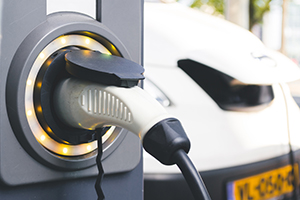By Tom Preston, Managing Director, Hippo Leasing
The transport sector is the fastest growing contributor to climate emissions. However, the impending EV revolution is aiming to slow this concerning trend and unlock new business benefits for those adopting electric over traditional fossil fuels.
In fact, by 2020 it’s estimated there will be over 1 million Electric Vehicles (EVs) on the UK’s roads. The government has also just announced an extra £2.5 million for EV charging points to ensure the country’s infrastructure matches the rising demand.
There are many financial and reputational benefits of making the switch to electric fleets, yet many businesses have, so far, been slow off the mark. So, if your business is considering making the switch, here are some top tips…
Plan ahead
Switching your fleet to Electric Vehicles (EVs) shouldn’t be a quick-fire decision, but something that gets planned months in advance.
While there are clear benefits of switching to EV – which will be discussed in this article – it must ultimately work for your business and its employees.
Telematics are a rich data source you can leverage to help plan your transition to EV and ensure driver acceptance. It can tell you your driver’s daily mileage, the type of routes they’re using, weight of loads and number of stops made. This can all affect whether an EV is a suitable choice or may hinder driver experience and your operations.
If drivers usually travel long distances every day, spend sustained periods in excess of 70mph and have unpredictable journeys that are time sensitive, EVs may not currently be the best option.
Ready, steady, can’t go
EV sales grew by nearly 160 per cent in July 2019 alone, their highest share of the market to date. Whilst this growth is complimented by an increase in charging points, it’s important to ensure your EV fleet can keep moving.
Although Rapid, Fast and Slow charging points are being installed daily, some UK locations are better prepared for the EV revolution. As of August 13th, the UK had a total of 14,745 public charging points and 25,118 connectors in 9,296 locations, but the likes of Wales and Yorkshire and the Humber have 5 per cent or less connectors overall.
How your EVs will charge and keep going once out on the road should be a major consideration long before you switch. If you find your drivers have long routes in areas with a lack of charging infrastructure, perhaps you’ll need to invest in a hybrid vehicle or adapt operations.
For depots with the capacity to install charging points, this will be less of a concern, but for field-drivers, you’ll need to determine whether vehicles can be charged from home.
Cost-saving potential
One of the main benefits of going electric is the cost-saving potential. While the initial cost may be significantly higher than that of a petrol or diesel vehicle, over time an EV fleet can be much cheaper to run and maintain.
To start, an EV has approximately 20 moving parts, a stark contrast to an ICE (Internal Combustion Engine) vehicles’ 2,000+ moving parts which can cost hundreds, if not thousands, to repair once damaged. Not only that, an EV depreciates slower and has a long battery life.
A full charge for a 60kWh battery EV costs approximately £8.40, which will cover a 200-mile radius. In comparison, the average cost of petrol is 129.3p and diesel 132.1p per litre, equating to approximately £27.34[1] for the same journey.
In the 2020/2021 tax year, drivers of emissions-free fleet vehicles also using the vehicle for personal use won’t have to pay Benefit-in-Kind (BiK) tax. After April 2021, this will rise to 1 per cent, then 2 per cent from April 2022, which will be deducted from your salary.
The benefits of EVs don’t stop there, for they also have the added bonus of not being subject to fuel or annual road tax (VED). However, if you operate hybrid vehicles, fuel tax exemptions may not apply.
Government incentives
It’s OK to ask for help, especially when the initial expenditure of going green is large. To help ease the financial outlay, look to government grants such as The Workplace Charging Scheme and The Plug-In Grant.
The Workplace Charging Scheme limits 20 charge point sockets per business, paying up to 75 per cent for the purchase and installation costs, up to a maximum of £500 per socket. Businesses should have designated off-street parking prior to putting in an application, which can be made online.
The Plug-In Grant pays up to 35 per cent of the purchase price for low emission cars, up to £3,500, and 20 per cent for vans, paying no more than £8,000. The discount will be automatically applied at the end of your purchase with the dealer. Some vehicles are exempt, so check before purchasing.
EV like Sunday morning
UK authorities have started implementing Clean Air Zones (CAZs) in urban centres where air quality needs to be improved. Birmingham, Leeds, Southampton, Nottingham and Derby will be the first cities to introduce a CAZ, with a further 23 local authorities in the pipeline.
Whilst this isn’t great news for petrol or diesel drivers, EVs are already ahead of the game and faces no restrictions or additional fees driving in these areas
Although each authority can set its own rules depending on the changes needed, driving in these areas with a petrol or diesel vehicle may be trickier. In cities such as Oxford, a Zero Emission Zone (ZEZ) will be introduced, which will see all non-zero emission vehicles banned from parking and loading during certain hours.
Shout about it
If your business is investing in an EV fleet, shout about it. Let your customers and partners know, by publishing a blog on your website, including it in your business’s sustainability or CSR statement and using it as a USP in your marketing collateral to show your company cares about its environmental responsibilities.

Add new comment